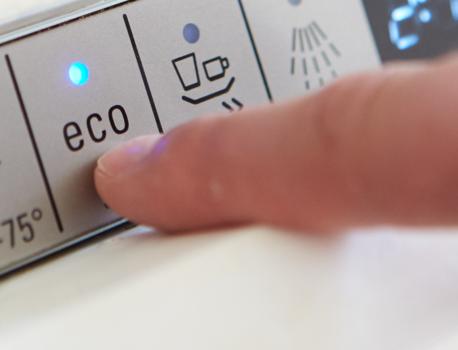How to Buy Energy-Saving Appliances

While you're shopping for products from appliances to lighting with optimal energy performance -- and you are, right? -- three programs (the Consortium for Energy Efficiency [CEE], Energy Star, and Energy Guide) can help.
Energy Star is the name you likely know, but if truly stellar energy performance revs your motor, go straight to the Consortium for Energy Efficiency (CEE).
What it is: Nonprofit CEE establishes energy performance tiers on behalf of its members (utilities and state agencies that manage energy efficiency programs), which appliance manufacturers may want to meet. Although CEE doesn't rate products the way Energy Star does -- you won't find a CEE label on products in stores -- its energy performance benchmarks can help you sort through the options in certain appliance categories:
-
Gas furnaces
-
Gas boilers
-
Clothes washers
-
Dishwashers
-
Room ACs
-
Refrigerators
-
Water heaters, including tankless models
For each category, you can download qualifying product lists, which designate a tier 1, 2, or 3 specification for individual products, taking both energy performance and water usage (if applicable) into account.
-
Tier 1 products meet Energy Star requirements at a minimum.
-
Tier 3 products are super-efficient -- the cream of the crop.
CEE updates its data every month.
Note: Often high-efficiency products are more expensive than their less-efficient peers, but may cost less to operate annually.
Energy Star
What it means: Energy Star, the U.S. Environmental Protection Agency's flagship label, identifies roughly the top 25% of each product category it rates in terms of energy performance. It's the best-known and most widely applied green stamp of approval, covering more than 50 product categories, including appliances, lighting, plumbing, and heating and cooling systems.
Bad press leads to more reliable Energy Star ratings
Energy Star beefed up its standards after getting bad press in 2010, when the U.S. Government Accountability Office reported it was able to get fake products approved. All products must now be individually reviewed by Energy Star staff and tested by approved third-party labs.
But Energy Star is still trustworthy, says BuildingGreen, an independent company that educates building professionals on green product certifications:
-
Its standards get more stringent every two years to coincide with manufacturing cycles for new products.
-
It responded quickly after being called on the carpet by changing its product approval process.
It's easy to find Energy Star labels in the store, but if you want to research your purchase in advance, download compliant product lists.
Note: Often high-efficiency products rated by Energy Star are more expensive than their less-efficient counterparts, but you save money on annual operating costs.
Energy Guide
OK, one more rating label to add to the mix. You've probably seen the ubiquitous yellow Energy Guide sticker on new appliances in stores.
What it means: Energy Guide lists the manufacturers' self-reported performance numbers, not the results of independent third-party testing. Plus, those numbers may not reflect how you'll use the product in your own home (do you make a special effort to use the most energy-efficient settings at all times, or do you dry tons of laundry on high heat?) or the rates your utility charges.
So if you use Energy Guide labels at all, use them to compare models in the store in terms of up-front cost vs. annual operating cost. But the labels don't provide enough context to tell you whether a product is really the best energy-saving deal you can get for the price. That's where Energy Star and CEE come in.


